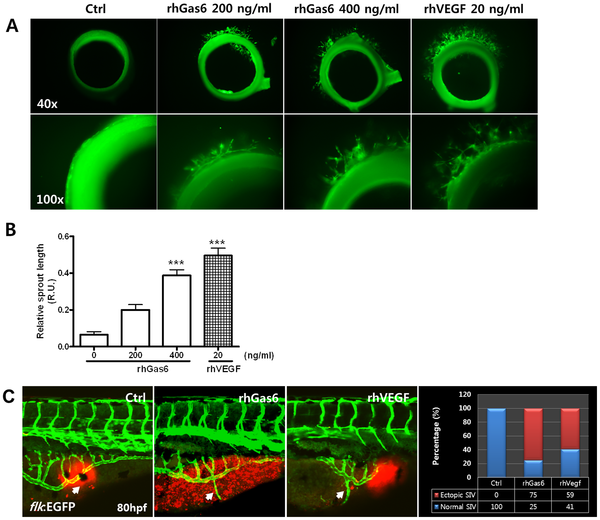Fig. 3
Angiogenic responses are induced by rhGas6 in rat aortic rings and in zebrafish embryos.
(A) Representative images after 5 day incubation with rhGas6 and rhVEGF. Sprouts from rat aortic rings are shown in the Matrigel control, rhGas6, and rhVEGF after treatment for 5 days, as described in the Materials and Methods. (B) Quantification of sprout length from aortic rings revealed increased sprout formation after a 5-day treatment with rhGas6 and rhVEGF in Matrigel. Data are expressed as mean ± SEM. (n = 4). ***p<0.001 vs. control. (C) Transgenic embryos (flk:GFP) at 50 hpf were injected into the perivitelline space with Texas Red dye (Ctrl), Texas Red dye and rhGas6 (300 ng/µl), or Texas Red dye and rhVEGF (5 ng/μl). After 30 h, embryos were photographed under a confocal microscope. In the controls, the formation of ectopic sprouts (arrow) is never observed, and the injected embryos of the rhGas6- and rhVEGF-treated embryos show ectopic sprouting of subintestinal vessels (SIVs). The experiment was repeated three times (Control, n = 28; rhGas6, n = 24; rhVEGF, n = 24).

